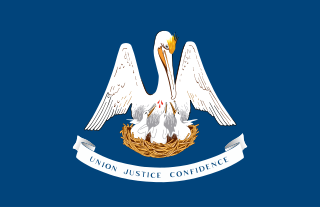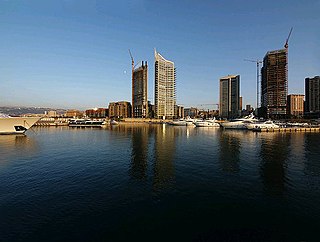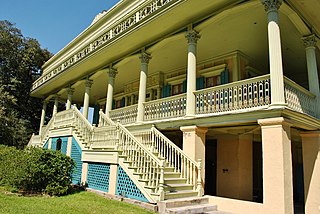
Aurora is a community of Algiers in New Orleans, Louisiana. It is divided into three areas: Old Aurora, Walnut Bend, and Huntlee Village.

Algiers is a section of New Orleans, the only Orleans Parish community located on the West Bank of the Mississippi River. Algiers is known as the 15th Ward, one of the 17 Wards of New Orleans. The neighborhood became the birthplace of Jazz as it was once home to many of the early African American Jazz artists in the early 1900s. This ward is the biggest of all 17 wards and is considered a historic piece of land to the History of New Orleans.

New Orleans is a consolidated city-parish located along the Mississippi River in the southeastern region of the U.S. state of Louisiana. With an estimated population of 391,006 in 2018, it is the most populous city in Louisiana. A major port, New Orleans is considered an economic and commercial hub for the broader Gulf Coast region of the United States.

Louisiana is a state in the Deep South region of the South Central United States. It is the 31st most extensive and the 25th most populous of the 50 United States. Louisiana is bordered by the state of Texas to the west, Arkansas to the north, Mississippi to the east, and the Gulf of Mexico to the south. A large part of its eastern boundary is demarcated by the Mississippi River. Louisiana is the only U.S. state with political subdivisions termed parishes, which are equivalent to counties. The state's capital is Baton Rouge, and its largest city is New Orleans.
From the 1950s, the original name of the Old Aurora neighborhood was Aurora Gardens. [1] The residential subdivision was developed on acreage which formerly belonged to the Aurora Plantation. [2]

Real estate development, or property development, is a business process, encompassing activities that range from the renovation and re-lease of existing buildings to the purchase of raw land and the sale of developed land or parcels to others. Real estate developers are the people and companies who coordinate all of these activities, converting ideas from paper to real property. Real estate development is different from construction, although many developers also manage the construction process.
Part of the Battle of New Orleans (1814–15) was waged here along the west bank of the Mississippi River. Reportedly there remain some earthworks near the river and a state historical marker to commemorate the event.

The Battle of New Orleans was fought on January 8, 1815, between the British Army under Major General Sir Edward Pakenham, and the United States Army under Brevet Major General Andrew Jackson. It took place approximately 5 miles east-southeast of the city of New Orleans, close to the present-day town of Chalmette, Louisiana, and was a U.S. victory.

The Mississippi River is the second-longest river and chief river of the second-largest drainage system on the North American continent, second only to the Hudson Bay drainage system. Its source is Lake Itasca in northern Minnesota and it flows generally south for 2,320 miles (3,730 km) to the Mississippi River Delta in the Gulf of Mexico. With its many tributaries, the Mississippi's watershed drains all or parts of 32 U.S. states and two Canadian provinces between the Rocky and Appalachian mountains. The main stem is entirely within the United States; the total drainage basin is 1,151,000 sq mi (2,980,000 km2), of which only about one percent is in Canada. The Mississippi ranks as the fourth-longest and fifteenth-largest river by discharge in the world. The river either borders or passes through the states of Minnesota, Wisconsin, Iowa, Illinois, Missouri, Kentucky, Tennessee, Arkansas, Mississippi, and Louisiana.











